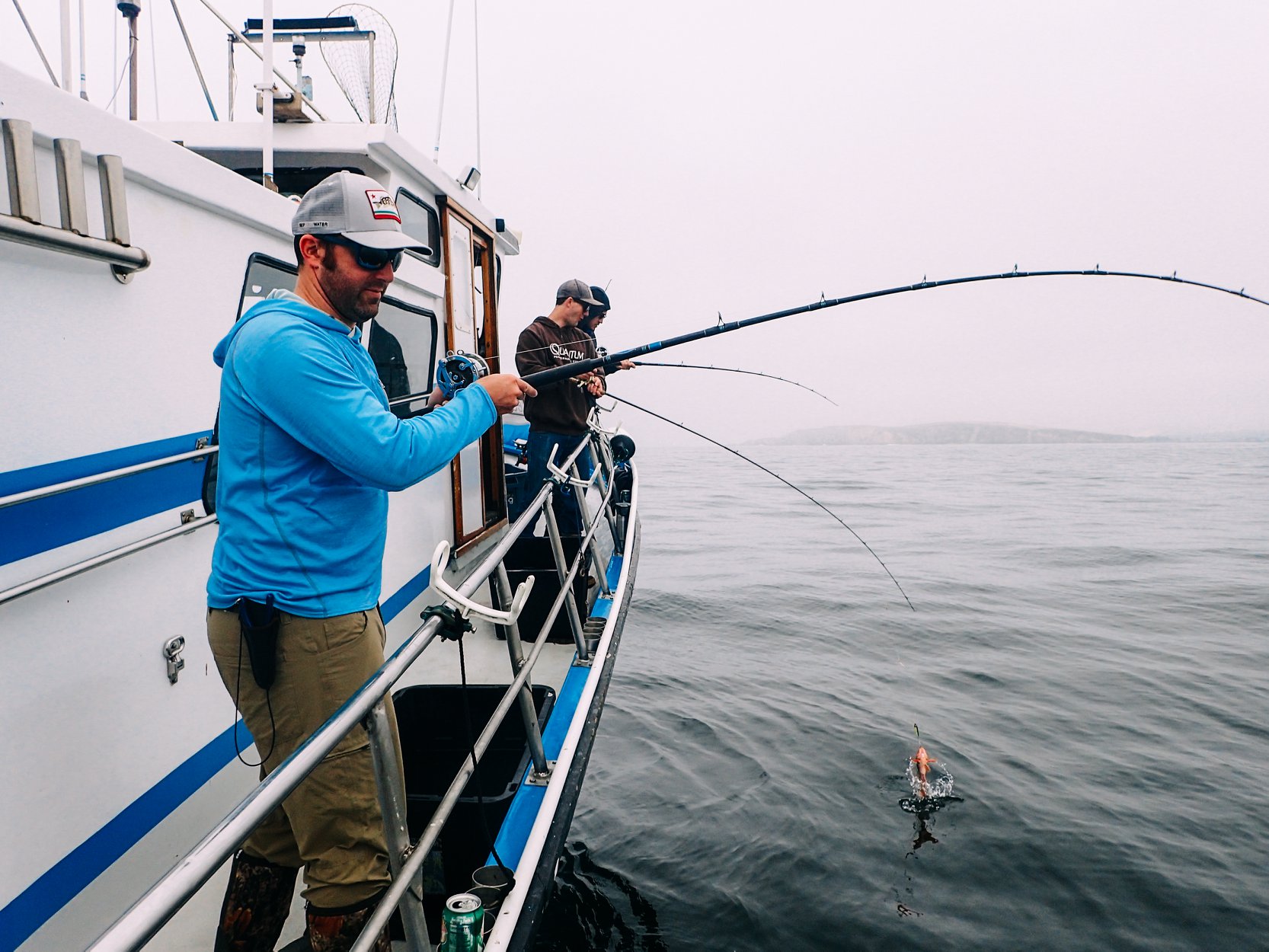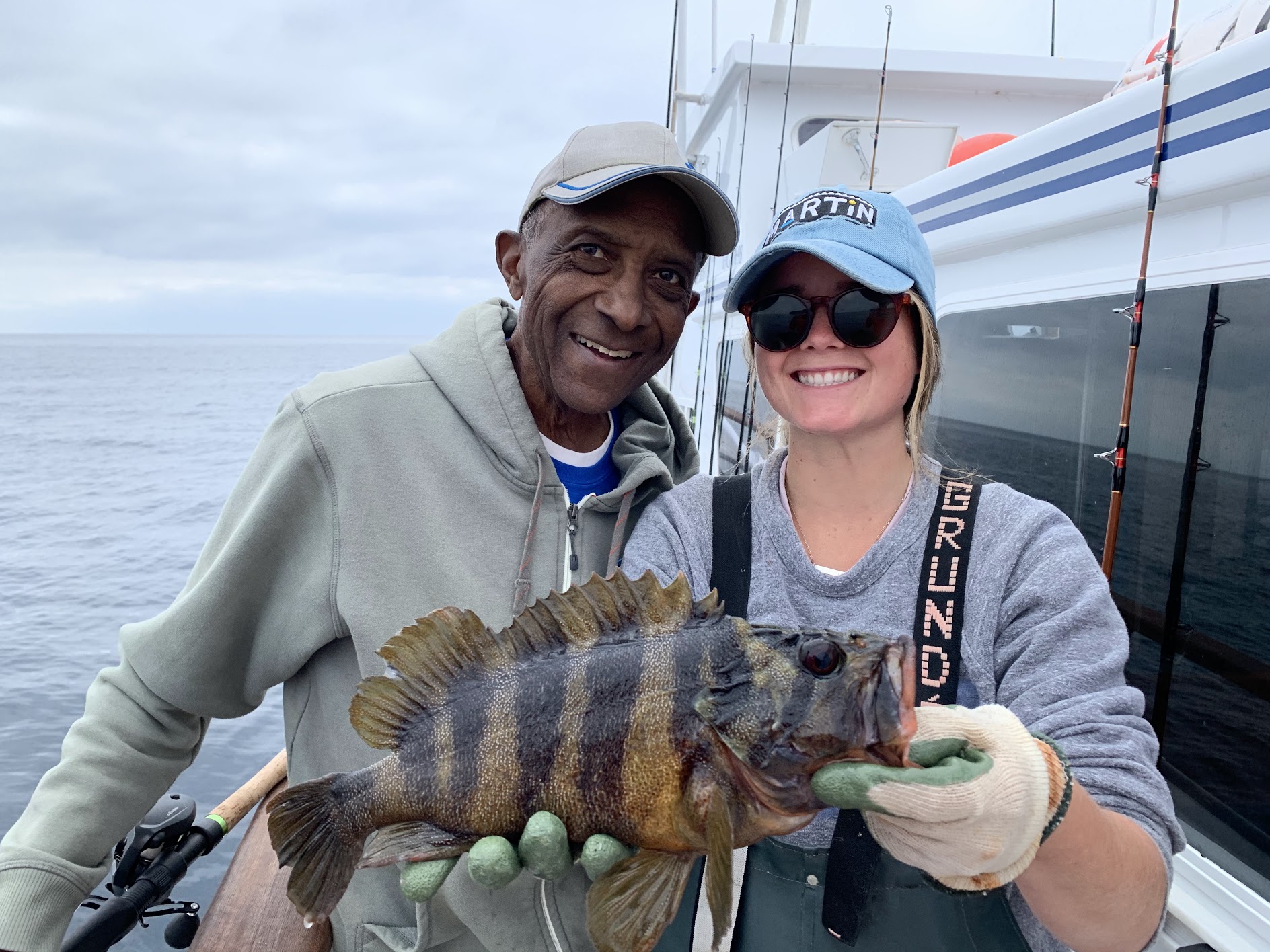Scientists teamed up with recreational fishermen and found that fish are bigger and more abundant inside of marine reserves.
In many ways, California’s Marine Protected Area (MPA) network is a giant experiment. In contrast to a long history of land protection efforts such as our National Parks, scientists have relatively little information on how a similar approach will work at sea. This makes research and monitoring efforts critical for assessing whether the state’s MPA system is working to protect biodiversity and promote sustainable fisheries.
But monitoring the vast expanse of undersea landscape isn’t an easy task, so scientists turned to the community for help.
Every year since 2007, researchers have teamed up with fishermen across the state to get an idea of how fish populations are changing in response to protection. An impressive 1,700 people have taken part in the efforts to date, known as the California Collaborative Fisheries Research Program. The project is administered by California Sea Grant in partnership with the Ocean Protection Council and the California Department of Fish and Wildlife as part of the Marine Protected Area Monitoring Program.
Scott Hamilton, a marine ecologist at San Jose State University’s Moss Landing Marine Laboratories, is leading the effort in central California with Rick Starr, former California Sea Grant Extension Director and cofounder of the program (along with Dean Wendt of Cal Poly San Luis Obispo). Hamilton emphasizes that the community partnership is crucial not just for data collection efforts, but also for building relationships between scientists and the people who are key to the success of MPAs.
“We're the only program that's working directly with the fishing community and directly engaging the critical stakeholders that, from the outset, were the most vocally opposed to the creation of the MPAs,” says Hamilton.

Fishermen and scientists fish alongside each other to learn more about how MPAs are changing the sizes, abundance, and distribution of fish.
The fishermen join researchers on fishing trips to conduct hook-and-line surveys in waters less than 40 meters deep. They survey within, and just outside, 12 MPAs along the state’s coast. Fish are identified, measured, and sometimes tagged before being released. When a tagged fish is recaptured, either by the research team or other anglers who report it, the researchers can track the fish’s movements through time and determine connectivity between MPAs and spillover to fished areas outside the MPAs.
Establishing protected areas can be challenging when people oppose restrictions in their favorite fishing grounds, but Hamilton’s team has seen much of this opposition fade when anglers join the partnership. The ability to fish both within and outside of some of the protected areas and compare the size and diversity of fish is enough to convince most anglers that the MPAs are a good idea. Giving them a peek behind the curtain of the scientific process also helps to build trust, and the fisherman often share their own knowledge built through countless hours at sea.
This change in attitudes isn’t merely anecdotal. Erica Mason at Scripps Institution of Oceanography published the results of an angler survey last year that found a 25% growth in positive opinions of MPAs following participation in the program.

Fishermen with a large treefish caught while fishing with the CCFRP group. All fish are released after the researchers collect data on their size and location.“I think the fact that we’re demonstrating this impact on changing the opinions of anglers towards MPAs is crucial to continuing to get the support and the buy-in of some of the most critical stakeholders that we need for continuing to manage these things properly,” says Hamilton.
The partnership doesn’t end when the anglers step off the boat. Hamilton’s team works to involve the citizen scientists throughout the process by holding workshops at the end of the season to share results of the data collection.
And the initial results are impressive. Hamilton’s team found that fish inside MPAs are larger and more abundant than in areas open to fishing. In fact, fish biomass roughly doubles inside the reserves. This effect is stronger inside MPAs that cover a wider stretch of sea, and at sites with heavy fishing pressure just outside of the protected area. Notably, the growth in body size and abundance of fish will also trickle into surrounding areas, strengthening the ecosystem of a wider area.
“I think we were pretty impressed with how clear the results were on the efficacy of MPAs across the statewide network,” says Hamilton.
Although the MPAs encompass everything from the rocky intertidal zone to deeper waters, monitoring the region within and just beyond the kelp beds is critical for understanding the effects of the reserves. This is the zone that likely experienced the heaviest impacts of fishing prior to establishment of the MPAs.
The data also shows that the reserves were more resilient when the marine heatwave hit between 2014 and 2015. Although fish biodiversity declined rapidly both inside and outside of the MPAs following the heatwave, diversity is recovering significantly faster inside reserves, where there is less pressure from human use.
Beyond collecting promising data on how the reserves are helping fish communities thrive, the collaborative model is used as a model for other states, like Oregon, now working to establish their own MPA system.
Much like a healthy ecosystem, the research team gains strength from diversity. Six California universities (Humboldt State University, UC Davis Bodega Marine Lab, SJSU Moss Landing Marine Laboratories, Cal Poly San Luis Obispo, UC Santa Barbara, UC San Diego Scripps Institution of Oceanography) cooperate with the captains and crew of 36 sportfishing boats and the team of volunteer anglers. Rachel Brooks, at Moss Landing Marine Laboratories, works full-time to coordinate the project statewide, and Shelby Ziegler is a postdoctoral researcher in Hamilton and Starr’s labs who leads the data analysis.
With such a crucial role to play in the success of California’s ambitious marine conservation strategy, the California Collaborative Fisheries Research Program aims to continue providing data and working with anglers into the future. This type of long-term data collection is critical for accurately assessing changes in ecosystems in response to resource management decisions and a changing climate.
